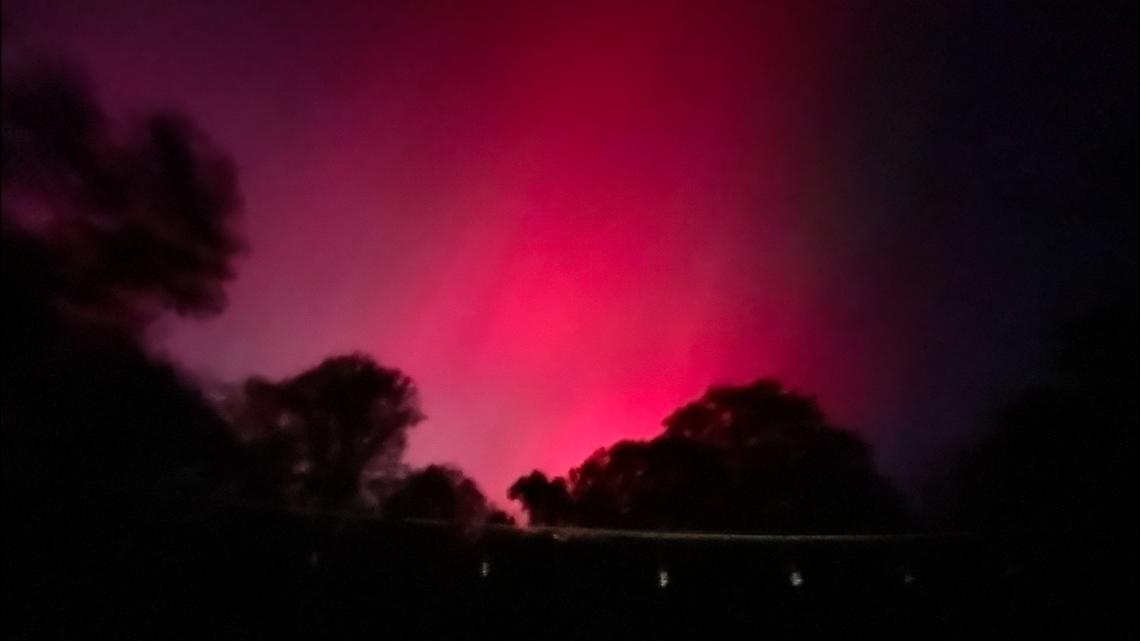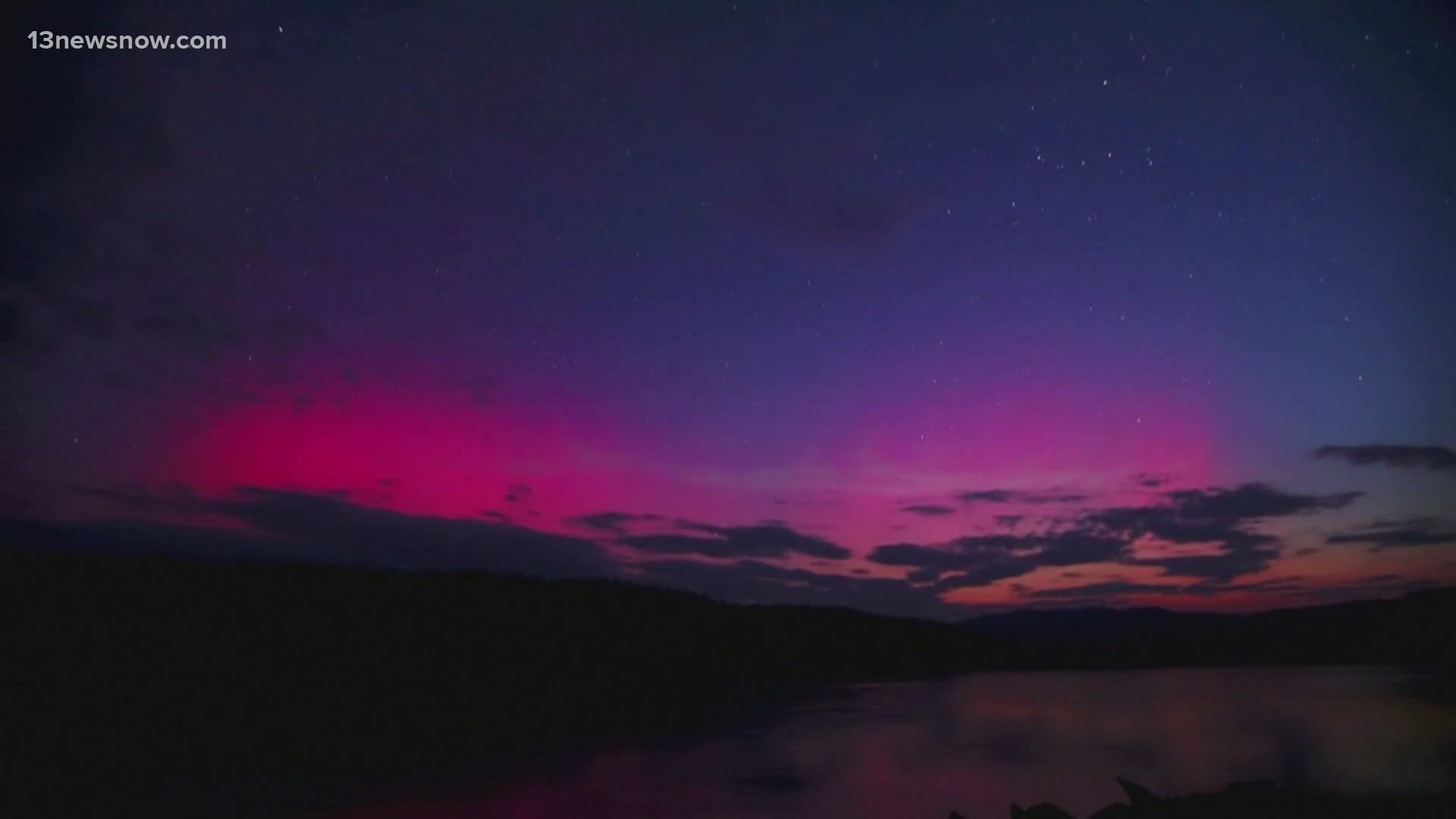NORFOLK, Va. — People all over the viewing area were treated to a dazzling show on Thursday night. The Aurora Borealis lit up the night sky for three hours of magic.
Also known as the Northern Lights, this phenomenon is created when energized particles from the sun slam into the Earth’s atmosphere. The redirection of those particles by Earth’s magnetic field creates the colorful ribbons you witnessed in the sky.
The aurora is usually observed in northern regions like Alaska, Norway, Iceland, and Sweden, but they’ve put on quite the show all over the U.S. this year. In May, the strongest solar storm in 21 years was visible across most of the country.
Forecasters explain that the Northern Lights have been intense lately because of where the sun is in its 11-year solar cycle. It’s at its solar maximum, and with it, there was an unexpected boost in magnetic activity that’s localizing these space storms.
NOAA has an aurora dashboard that helps you track the Northern Lights.
While they’re magnificent to look at, the Northern Lights can cause issues.
The National Oceanic and Atmospheric Administration issued a severe geomagnetic storm watch for Thursday into Friday after an outburst from the sun was detected earlier this week. Such a storm could temporarily disrupt power and radio signals.
Some were worried about how this most recent display may have affected the response to Hurricane Milton.
If you missed the show Thursday night, don’t worry: forecasters say things should stay active through 2025 until the start of 2026, so there should be plenty of opportunity to enjoy the phenomenon.



